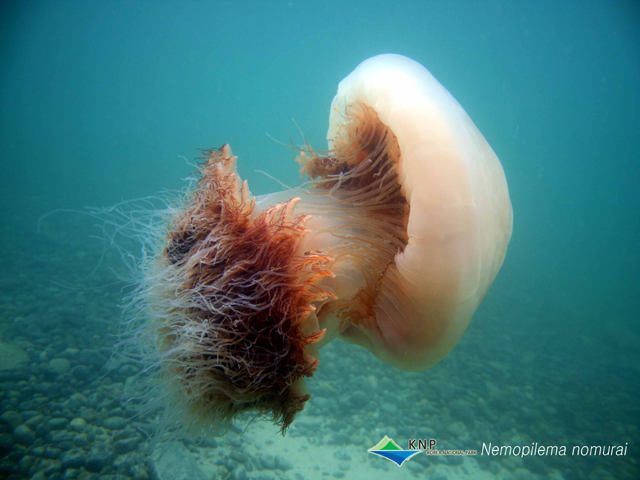| Rhizostomatidae () |
| 200 cm WD (male/unsexed); max.weight: 200 kg; max. reported age: 1 years |
|
pelagic; marine; depth range 0 - 176 m |
| Northwest Pacific: endemic to the East Asian Marginal Seas. |
|
|
| One of the largest jellyfish species (Ref. 3010). Occurrence of jellyfish bloom has threatened the fisheries in Japan since early 2000s, possibly because of global warming - note that the growth of medusae are dependent on high temperatures (Ref. 100320). Occurs in semi-enclosed basins of marginal seas (Ref. 122853) and also found offshore (Ref. 122855). Before the chitin-covered podocysts develop into adults, they remain dormant for at least 6 years. Jellyfish blooms occur by mass excystment of these podocysts upon exposure to high temperatures (Ref. 100312). |
|
Not Evaluated (N.E.) Ref. 123251)
|
| harmless |
|
Source and more info: www.sealifebase.org. For personal, classroom, and other internal use only. Not for publication.

